
It’s an energy source that reuses waste and prevents the release of a potent greenhouse gas into the atmosphere. But Australia’s biogas pioneers are going it alone
by Bianca Nogrady. Photography by Brian Cassey
Laurie Brosnan is frustrated. “We pay a tax to produce clean energy,” says the pig farmer from Biloela in central Queensland.
In the past five years, his company, Bettafield Piggery, has invested millions of dollars in an advanced biogas system that not only meets all its own electricity needs, but feeds extra back into the grid.
It also takes care of all the piggery’s organic waste – plus extra food waste from schools and cafes in the nearby town – and generates water for irrigation and rich compost for the fields.
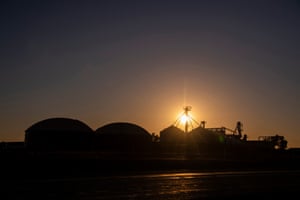
Yet this family-owned and run operation is taxed at the same level as a large natural gas plant.
Biogas is what is produced when organic matter breaks down anaerobically (without oxygen). It consists mainly of biomethane, which can be burned to generate heat and electricity, or used as a substitute for natural gas.
In 2016-2017, Australia’s 242 biogas plants – around half of which are landfills harvesting methane – generated around 1,200 gigawatt-hours of electricity, or 0.5% of the national electricity generation total, according to a report produced for the Australian Renewable Energy Agency and others. But that same report concluded that biogas had the potential to deliver almost 9% of Australia’s total energy consumption.
Biogas backers say it dramatically cuts the amount of methane – a greenhouse gas up to 40 times more potent than carbon dioxide – being released into the atmosphere. Some carbon dioxide is released in its generation, but the climate impact is significantly reduced. By contrast, extracting gas from below ground creates substantial new emissions.
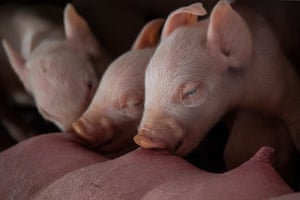
Many piggeries pump the effluent into ponds or holding tanks, but the Brosnans wanted a solution that meant they could effectively dispose of that waste on a daily basis.
The solution was a biogas plant. Inside two 3m-litre, constantly stirred tanks, bacteria digest the organic matter in the waste, which includes “paunch” – cow stomachs – from a nearby abattoir. In the absence of oxygen, they generate huge quantities of biogas, consisting of a mix of methane, carbon dioxide, hydrogen sulphide and water vapour.
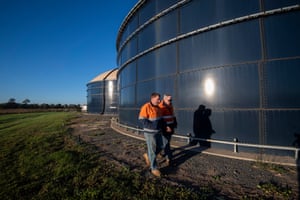
The methane is turned into electricity via three generators that operate in the same way as truck engines, except they run on methane instead of diesel. Bettafield started out with two 100 kilowatt engines, and recently added a larger 360kW engine, taking their total power generation capacity to 560kW.
The system even harvests the waste heat generated by the three engines. A heat exchanger transfers that heat into water that is then piped under the floor of the farrowing shed to keep the piglets warm. “For every kilowatt of energy, you get a kilowatt of heat and we’re using that heat to reduce our costs again but also to be environmentally friendly,” Brosnan says.
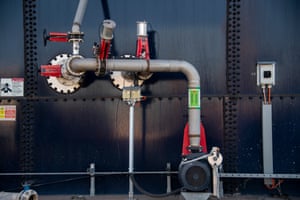
Shahana McKenzie, the CEO of Bioenergy Australia, says there has been a dramatic increase in commitment to biogas projects in Australia in the last 12 months. “Actually, there’s a bit of a race on between the gas pipeline owners at the moment to see who is going to get the first [biogas] project.”
McKenzie says biomethane as a substitute for natural gas has the advantage over hydrogen in that it doesn’t require infrastructure change. The biogas can be generated from wastewater treatment plants – a significant number of major sewage treatment works already use biogas digesters – as well as agricultural operations such as piggeries, dairy farms and abattoirs. There’s also enormous potential for councils to generate biogas by diverting organic waste from landfill. And all of that could translate into jobs and infrastructure spending right where it’s needed most: regional Australia.
“We absolutely see that is a big opportunity for regional Australia,” McKenzie says. An anaerobic digester in every regional town would create jobs, help stabilise electricity and gas supply, reduce emissions and waste, and generate rich compost for local agriculture.
The biggest barrier is government policy, she says. “The policy climate does not lend itself at the moment to development of biogas projects; it supports business as usual. Not having a price on carbon certainly is something that makes it harder for most renewables, particularly at that early development stage.”
But all that could change with the release of a bioenergy roadmap later this year, the development of which was supported by all major parties and funded by the commonwealth. “That will really provide some pointers in terms of the direction of where bioenergy would make the best sense in Australia,” McKenzie says.

A major curve ball was the discovery that because they were generating their own electricity, they were required by the local electricity retailer to buy back all the power lines on their site at a cost of around $200,000.
Brosnan stresses that a biogas operation of this size is a major – and ongoing – undertaking. “The concept was sold to us as: it’s pretty well self-sufficient, you need to just go down and check a few gauges and walk away,” he says. “It’s not like that. It’s not free energy as such.” He estimates the company spends around $0.04-$0.06 per kW hour on maintenance, and the system requires constant monitoring.

All up, the set-up has cost around $3.5m. It’s not something that would necessarily work for a smaller-sized operation, and in fact the company decided against installing a similar system for its smaller, 600-sow piggery because it would not be economical.
But the plant has been so successful that Bettafield now collects extra organic waste from local schools, restaurants and cafes, as well as waste oil from fish and chip shops. It even runs educational tours of the facility for local schools.
While Bettafield is one of a growing number of larger operations in Australia, home-scale biogas digesters are also starting to come on the market. Queensland company BioBowser sells small digesters for backyard use, as well as larger units that can be used in commercial settings such as restaurants and small farms. The only catch is that the biogas can’t be used indoors because it’s odourless, which poses a potential risk if there’s a leak. But it’s well suited to outdoor use, such as in barbecues or hot water systems.
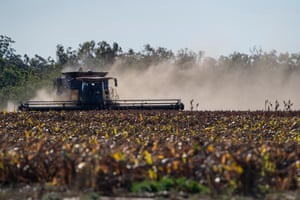
Unlike a composting system, which can’t take protein, biogas digesters will eat just about everything organic, even waste fats and oils. “That’s where food waste is better than garden waste or vegetable waste, because it’s got some more protein and it’s got some more carbohydrates in the waste, such as bread, and fat,” Lakin says.
An input of four to five kilograms of organic waste will generate around one cubic metre of biogas, which he says will keep a single gas burner going for 60-90 minutes.
Not all experts call biogas a renewable energy source, but Lakin believes it should be considered alongside solar and wind because of the net benefit it provides by stopping the release of methane into the atmosphere.

Composting may take care of organic waste, but the methane from that process isn’t captured. “We want to be able to capture that methane and use it as renewable energy,” Lakin says.
Overregulation and a lack of government support are barriers to more widespread uptake of biogas digesters in Australia, he says. “The Queensland government charge a digester over a certain size $4,000 a year as a safety inspection fee.”
Brosnan believes biogas digesters could be set up in any Australian town. “The only thing that is standing in the way is councils themselves,” he says. “They’ve got to get their heads wrapped around it, that they need to do it or want to do it, and it can actually save them money.”
He argues the municipal organic waste and sewage of a town the size of Biloela would be able to generate significant amounts of methane-powered heat and electricity, while also better managing its waste than simply dumping it in landfill.
“Nobody’s making land in a factory, so [if] they keep burying rubbish, it stacks up,” he says. “It is most definitely the way of the future.”
The coronavirus pandemic has devastated the economy but also presented a unique opportunity: to invest in climate action that creates jobs and stimulates investment, before it’s too late. The Green Recovery features talk to people on the frontline of Australia’s potential green recovery.
No comments:
Post a Comment